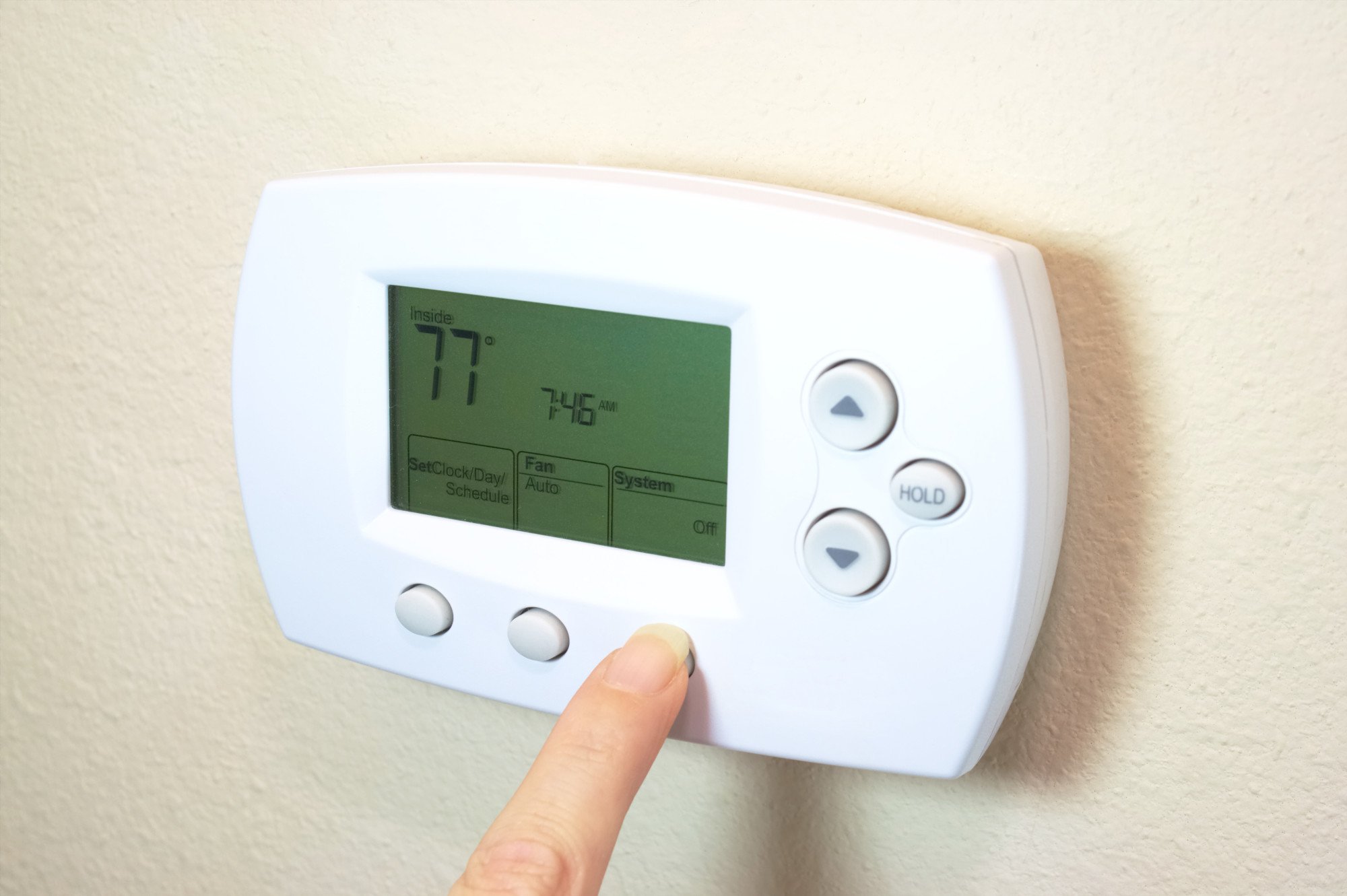How the Right Thermostat Settings Can Save Money
According to CNET.com, the correct thermostat settings can reduce yearly energy costs by 10%. While this might not seem like huge savings, every little bit counts when saving on that utility bill.
Additionally, being mindful of your thermostat and how long your HVAC system is running can help ensure your unit isn't working harder than it needs to, which can help you save on HVAC repair and replacement costs.
So what are the best thermostat temperatures for saving money? Here's what every homeowner needs to know.
The Best Thermostat Settings for Staying Comfortable While Saving Money
Obviously, the ideal thermostat settings for someone living in Austin, Texas, will not be the same as those living in Lansing, Michigan, depending on the time of year. However, there are some general rules for determining the ideal thermostat settings for your home, regardless of where you live.
Summer Thermostat Settings
For maximum money savings, Energy Star recommends keeping your thermostat set to 78° Fahrenheit during the day if you're at home. Increase it to 85° F when you're away. At night, raise the temperature to 82° F.
If these temperatures sound too high for comfort, consider these money-saving A/C facts:
Dropping your A/C temperature lower will not cool your home faster. It will, however, increase energy consumption and bills. If necessary, sit in a room with a fan while your home cools down.
Most A/C units can only keep your home 15 to 20 degrees cooler than the outdoor temperature. Setting your thermostat any lower will only waste energy and money. Most programmable thermostats display both the indoor and outdoor temperature so you can better monitor the temperature at which your A/C should be set.
A higher thermostat during hot months rather than a lower one will reduce how quickly heat flows into your dwelling. Less heat coming into your home means your HVAC unit isn't working as hard or as long to cool it.
If you live in the south, trying to sleep with the A/C set to 85° F might be uncomfortable. If you usually keep your thermostat set to the low 70s at night, even increasing it to the mid-to upper-70s can help you save.
Raising your thermostat as little as 7 degrees or as much as 10 degrees can help you save up to 10% per year. You just might not save as much as you would with it set to 85° F each night. Installing ceiling fans in bedrooms can help circulate air and feel cooler while you sleep and save.
Winter Thermostat Settings
During the cold winter months, the lower your inside temperature, the slower the heat loss from your home. So keeping your home cooler during the winter will help it hold heat longer.
The US Department of Energy recommends keeping your thermostat set to a low 68° F during the day in the winter to save money. If you really want to save some bucks on winter heating bills, adjust your thermostat down by 7 to 10 degrees for eight hours each day.
This can be eight hours during the day or night. It really comes down to your sleep preferences and how much you are or are not home during the day. Either way, those eight hours can help save you up to 10% on heating costs.
The Big Benefit of a Programmable Thermostat
Whether you have a smart home or just a smart thermostat, having the ability to program the optimum thermostat settings can help ensure you keep your home at the best energy saving temperatures. Remembering to adjust your thermostat a few times a day is inconvenient.
If you still have a manual thermostat, it might be the ideal time to have an HVAC technician replace it for you. Now that programmable thermostats are standard, buying and replacing one has become very affordable. Plus, the money you'll save on energy bills will more than pay for a new thermostat.
A technician can also determine if your thermostat is installed in the best location. If your thermostat is installed where it cannot get accurate readings, it could read a cooler or warmer temperature than most of the air in your home.
These are called ghost readings, and they can cause your HVAC unit to cycle on and off too often or run at the wrong temperature, costing you money.
The Importance of Regular HVAC Maintenance
While being mindful of your thermostat settings can save you money, the thermostat is only one piece of the money-saving puzzle when it some to your HVAC system. According to Forbes, preventative HVAC maintenance may be the most critical factor in ensuring the system operate at optimal levels for as long as possible.
An efficient HVAC system means less energy consumption and lower energy bills. But it also means fewer costly repairs, or worse, an HVAC replacement.
If you notice your HVAC system has to run for extended periods to keep your home at your ideal thermostat settings, don't assume it is because it is so hot or cold outdoors. It is likely a sign that something is wrong with your HVAC system, and you should schedule an appointment to have an HVAC technician look at it.
In fact, you should schedule HVAC maintenance at least once per year. Depending on where you live, it might make sense to have your unit checked before each summer and each winter.
Check Your Thermostat Settings
Do you keep your thermostat set to the best money-saving temperature throughout the day? If not, think of the extra money you send to the electric company each month. Then consider getting a programmable thermostat installed in your home so you can automate your home's ideal thermostat settings throughout the day and night year-round.
If you haven't had your HVAC unit serviced in a while or would like a programmable thermostat installed, contact us today to schedule a visit from one of our HVAC professionals.


